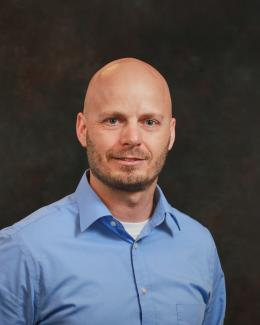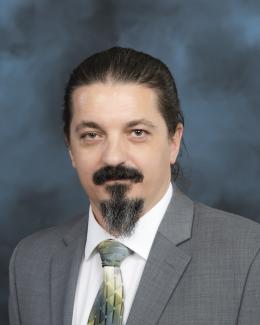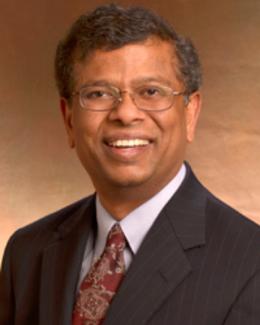Moving into the future with 3D printing
It’s been more than three decades since inventor Chuck Hull created stereolithography, a process that produces 3D objects by hardening a liquid resin with an ultraviolet laser beam.
Devices using this process, widely considered the first 3D printers, are still in use today, but they are hardly alone. Not only has a wide variety of 3D-printing technologies been developed in recent years—some using metals, others high-tech plastics— but their applications have also expanded, taking them out of the design studio and into the factory.
Additive technologies have the potential to profoundly change the way manufacturing is done in many industries. They are relatively flexible, allowing manufacturers and researchers alike to create one-of-a-kind objects, and they don’t penalize users for creating complex, intricate designs. In fact, 3D printers can create designs impossible by other methods.
These technologies are also efficient, using consistently less material than traditional processes and reducing waste.
“The average yield for a titanium component on an aircraft [made using traditional methods] is 10 percent,” noted Bill Peter, director of DOE’s Manufacturing Demonstration Facility located at ORNL. “For every 10 pounds of incoming titanium material, 9 pounds are removed and 1 pound ends up in the nal component.”
ORNL goes additive
ORNL has gone a long way toward demonstrating the value of additive technologies. In 2014 the lab designed and produced the world’s first 3D-printed car with partners Local Motors and Cincinnati Incorporated. More recently it earned a Guinness World Record for the world’s largest solid 3D-printed item, a trim-and-drill tool for evaluation by The Boeing Company. Along the way ORNL has printed vehicles, buildings, heavy machinery, and even a submersible.
These demonstrations illustrate the possibilities of large-scale additive manufacturing, but they are not an end in themselves. Rather they set the stage in areas such as advanced materials research, the development of physics-based computational simulation, and the creation of controls and sensors that provide real- time quality control in the deposition process, helping to pave the way for the next generation of additive manufacturing.
ORNL has worked with additive technologies for years, but only recently has the lab put an intense focus on applying its scientific expertise to some of additive manufacturing’s largest challenges.
“The challenges in additive manufacturing have changed,” said Ryan Dehoff, leader of the lab’s Deposition Science and Technology Group. “Five years ago the focus was on creating complex geometries. Today additive processes are required to be faster, larger, and use an increased range of materials."
Many of these applications, in fact, require new and unique materials designed specifically for the complexities of additive manufacturing, including high-temperature metals and light-weight reinforced carbon fiber composites. ORNL researchers and colleagues discussed one promising application—the use of functional materials such as rare-earth magnets—in Nature Scientific Reports. To reach its full potential, additive manufacturing must also go bigger, faster and cheaper. And manufacturers need a way to both ensure and verify the quality of each printed component.
Getting bigger and faster
ORNL has done much to overcome the size limitations inherent in conventional 3D printing. By incorporating robotic arms on a gantry system, ORNL researchers can deposit material faster while maintaining print quality. Because robots have substantial freedom of movement, these systems overcome some of the limitations of conventional 3D printing by, for instance, emulating the process a person might use to create an object by hand.
“One of the problems we have with traditional gantry systems is that when you’re growing a part, you can’t defy gravity,” explained Lonnie Love, leader of ORNL’s Manufacturing Systems Research Group. “One thing I can do with a robot is tilt the part or apply pressure.
“If you look at how humans make clay pots, you defy gravity all the time by supporting the material while it’s being formed. Again, imagine having multiple robots that can support the material while it’s setting, and then when it’s stiff enough they can let it go.”
In thinking big, however, Love’s team is not giving up on gantries altogether. Rather than being a component within a printer, they become the means of moving that printer.
“When you want to make something massive, you want this robot to be on a rail,” he said. “Imagine a robot that’s on a moving base that can move forward, backward, side to side, up and down. Now you’re not limited in terms of the size of part you want to make.”
Another obstacle to the widespread use of additive manufacturing is its expense. Between the cost of materials going into the process, the cost of the machine itself and the slow pace of printing, parts coming off a conventional 3D printer end up costing as much as $1,000 a pound, Love said.
Few industries can support such a cost, with aerospace and medical applications being potential exceptions.
The Big Area Additive Manufacturing system—developed through a collaboration with Cincinnati Incorporated—works to overcome the speed and cost challenges by depositing commodity materials and doing it faster than earlier systems. Like those systems, the BAAM machine melts a carbon-reinforced polymer to create products, but instead of pushing and melting a plastic wire, it relies on pellets of the material fed with a screw extruder.
“There’s a fundamental limit on how fast you can heat the wire and melt it,” Love said. “By going from a heated tube and wire to a pellet and screw, you go from a limit of one cubic inch an hour to printing as fast as you want.”
By using this new system and reinforcing the material with carbon fiber, he said, researchers were able to bring the cost of a final part from $1,000 a pound to around $20 a pound.
“Now it gets to be pretty exciting,” he said. “It opens up other applications where traditionally you would never think about 3D printing.”
Controlling quality and making a difference now
One goal for researchers working in additive manufacturing is to produce parts that can go into high-performance applications such as aircraft. The challenge in this case is quality control. In essence, one of the great strengths of additive manufacturing—the uniqueness of every component that comes off a 3D printer—is a potential roadblock because it means a close analysis of one part is no guarantee that the next part will be acceptable.
Before 3D-printed parts are used in critical areas of a plane, manufacturers will have to be able to perform rigorous quality control on every part that’s produced. ORNL is applying its expertise in materials, data and neutron science to overcome this challenge, but researchers stress that additive manufacturing is already prepared to make a big splash in many other areas.
Love said one major example is the tool-and-die industry, which has largely left the United States. Additive manufacturing has the potential to bring that business back home, creating jobs while saving manufacturers millions of dollars.
“What we’re showing is the killer application for 3D-printing today is printing tools, molds, and dies,” he explained. “Usually these things take months, if not years, and cost hundreds of thousands of dollars. They’re one-of-a-kind parts, which is what additive is really good at.”
As an example he pointed to a mold printed at the Manufacturing Demonstration Facility for the Marine Corps air station at Cherry Point, North Carolina. The mold would typically take months to produce, Love said, but in this case the Manufacturing Demonstration Facility had specifications on a Monday and was able to deliver the finished mold that Friday.
“The customer called the next week and asked how long it took to make the mold and how much it cost. I said, ‘Seriously, it took longer and cost more to ship it than it did to make it.’”
Love continued: “The automotive industry pays hundreds of millions of dollars for every model of car to make its tooling for a production line. If you ask yourself why the United States will sell SUVs when gas is $5 a gallon and smart cars when gas is $2, it’s because energy policies change faster than the automotive industry can change the model of a car.”
The future of 3D printing
ORNL is well placed to contribute as additive manufacturing moves into critical applications and plays an increasingly large role in manufacturing in general. As DOE’s largest science and energy national laboratory, ORNL can exploit a range of complementary strengths—in manufacturing, materials science, computation and data analysis, and neutron science—to prepare additive manufacturing for the big time.
“That’s what’s amazing about this one facility,” Love said. “ORNL can model the process, can make parts, and then can measure and validate them. Nowhere else in the world can you do this. That’s why overnight we’ve become the premier lab in terms of additive manufacturing. All of those fundamental science tools at ORNL are really the building blocks you need for additive manufacturing to be successful.”
According to Love, these technologies may also lead to a fundamental change in the way we approach manufacturing.
“If you think about it, back before the time of Henry Ford every town had everything it needed to produce for itself,” he said. “I think we’re establishing a new paradigm in manufacturing where customizable fabrication can be achieved locally with high fabrication rates.
“If you look at the BAAM and the things we’ve printed on one machine, it’s mind-boggling. We’ve printed tooling for aerospace, automotive, appliances, marine applications, and large wind turbine blade molds. In addition, we’ve printed cars, trucks, boats; it’s limitless. One machine and a fairly small area is able to manufacture a broad spectrum of applications.”
Even the materials going into the products may be produced locally, noted ORNL materials scientist Soydan Ozcan, who is focused on creating renewable materials that can be grown domestically and used in additive manufacturing.
“The way we are manufacturing is changing. Additive manufacturing is making it possible to have one machine very close to the feedstock or very close to end users. So can we combine local feedstocks and local manufacturing and create a local job? That’s a question we are also asking. This can change the way society sustains itself and creates jobs.”







